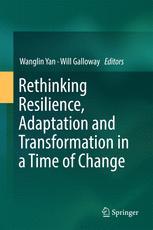

Most ebook files are in PDF format, so you can easily read them using various software such as Foxit Reader or directly on the Google Chrome browser.
Some ebook files are released by publishers in other formats such as .awz, .mobi, .epub, .fb2, etc. You may need to install specific software to read these formats on mobile/PC, such as Calibre.
Please read the tutorial at this link: https://ebookbell.com/faq
We offer FREE conversion to the popular formats you request; however, this may take some time. Therefore, right after payment, please email us, and we will try to provide the service as quickly as possible.
For some exceptional file formats or broken links (if any), please refrain from opening any disputes. Instead, email us first, and we will try to assist within a maximum of 6 hours.
EbookBell Team

4.8
74 reviewsThis book contributes to the literature on resilience, hazard planning, risk management, environmental policy and design, presenting articles that focus on building resilience through social and technical means. Bringing together contributions from Japanese authors, the book also offers a rare English-language glimpse into current policy and practice in Japan since the 2011 Tohoku disaster. The growth of resilience as a common point of contact for fields as disparate as economics, architecture and population politics reflects a shared concern about our capacity to cope with and adapt to change.
The ability to bounce back from hardship and disaster is essential to all of our futures. Yet, if such ability is to be sustainable, and not rely on a “brute force” response, innovation will need to become a core practice for policymakers and on-the-ground responders alike.
The book offers a valuable reference guide for graduate students, researchers and policy analysts who are looking for a holistic but practical approach to resilience planning.